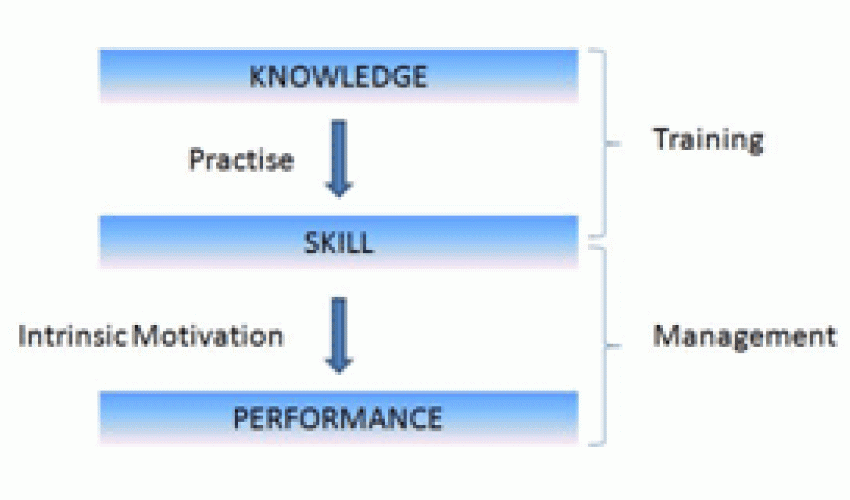Apr 14, 2018

According to data a report, one in eight employees quit their job before they reach a competent level of performance. Why they fail to reach a competent level is more about training and the skills of their manager than it is about the employee. At my first interview, I was too wet behind the ears to ask what training a rookie computer operator got and subsequently had to learn ‘on the job’, now recognised as the least effective form of training and a major contributor to why over 12% of new hires fail to make the grade.
Managers need to remember that the end goal for training employees is to create high performing teams and that identifying who needs training, deciding on what format the training should be, scheduling staff and finding budget is the easy part. The majority of companies use individual Training & Development plans to manage training and insist on these for each member of staff. However, the difference between training and development should be clear to staff. Training is needed when an employee does not have all of the skills required to be able to do the job that she is being paid to do The training plan should therefore be determined by the manager and supported by the employee. This is the opposite to the development plan, which is to help the employee be whatever it is she wants to be when she grows up; hence, the development plan is determined by the employee and supported by the manager.
To achieve greater success, many companies use formal interviewing and employee development techniques and tools. As an example, behavioural interviewing is the technique used to distinguish between knowledge and skill before hiring, whereas skill matrices can be used to grade the ability of staff to do what they need to be able to do after hiring. ‘Do’ rather than ‘know’ is the key word here and this should be reflected in the skills matrix.
Consider a medical student who has studied text books on brain surgery and is extremely knowledgeable on the subject. This person may score at the top of the scale in a skill matrix that has an entry of ‘Knowledge of Brain Surgery’ but score at the bottom of the scale in a skill matrix that has an entry of ‘Is able to remove a brain tumour without killing the patient’. Would you want this person operating on your customers? Practise is needed to convert knowledge into skill and yet few managers allocate time to employees returning from a training class just to practise what they have learned in a safe environment. This is important because some employees need more time to practise and develop their confidence in using what they have learned than others. How long it takes to develop the skill is less important than whether they achieve the skill or not.
To reach the desired level of performance, managers must facilitate and encourage skill development. But to maintain that level of performance, managers must verify and document that the required skills have been learned and motivate the team. Skills validation through testing provides the advantage of ensuring that an employee is capable of doing something and recording this in her training record. This can remove any chance of poor performance being the result of a lack of training or adequate skill attainment.
Motivating individuals to perform is a key management skill. Managers can motivate staff with bonuses, the possibility of promotion or salary increases and even the fear of redundancy, but these are extrinsic motivators. Extrinsic motivators are less effective, short lived and difficult to sell in troubled times. Generating the intrinsic motivation for the staff to do what is right, to do the best that they can and to treat others as they wish to be treated is about good leadership. Not all managers have been trained in how to effectively recruit, train and lead their teams and often blame poor performance on the quality of their employees. And yet an investment in management training is so easily justified because of the multiplier effect. If a service engineer attends a training class and increases her productivity by 10% then that will provide a significant return on investment on the cost of the class. If a manager attends a training class and improves her recruitment, training and leadership skills, which results in a 10% increase in performance for each employee in a ten person team then that is the equivalent saving of a service engineer’s annual salary.
- Log in to post comments





